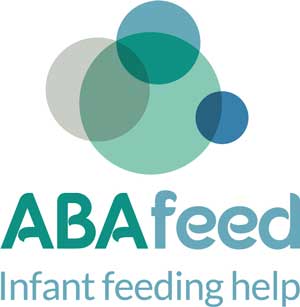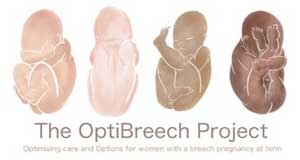Non-urgent advice: The following studies are now closed
The ABA-feed study (Maternity)

ABA-feed was a study offering extra support to women with feeding their baby.
New parents often have questions about feeding their baby and welcome extra support and advice. We wanted to compare two different ways of providing support for infant feeding. Those taking part in the study were divided, at random, into two groups – usual care or ABA-feed. One group received the usual information and support provided for feeding their baby from their midwife, health visitor and other available voluntary groups (‘usual care’). The other group received the same usual care but were also offered additional support before and after their babies were born from a specially trained ABA-feed Infant Feeding Helper.
This popular study has just closed, and we await the results with interest
PPHSAT – Perinatal Pelvic Health Self-Assessment Tool (Maternity)
This study asked for help from pregnant and postnatal women to complete questionnaires about their pelvic health [pelvic organs e.g., bladder, bowel, and vagina]. The aim of the questionnaire was to raise awareness and identification of symptoms and improve referrals to specialists. The study was about the design of the questionnaire and how it works in practice not on the medical findings of the participant, but this will help us to improve healthcare services provided to women in the future. Results will be shared in due course.
The Sunny Study (Maternity)
This study tested a new approach to helping people become more physically active during pregnancy.
Guidelines state that pregnant women should complete at least 150 minutes of moderate to vigorous intensity physical activity every week, this includes activities such as walking briskly, climbing stairs, and carrying shopping bags. Physical activity can have important health benefits for pregnant women such as reducing their risk of gaining more weight during pregnancy than recommended, decreasing feelings of anxiety and depressive symptoms, improving sleep, and can help to reduce lower back pain. However, many pregnant women find it difficult to be physically active during pregnancy and spend a lot of time sitting. This study aimed to explore two different approaches to helping pregnant women be physically active and we await the results with interest.
The CRAFT Project (Maternity)

This study was an investigation into the role of previous in-labour caesarean section in future preterm birth risk and potential management strategies. Worldwide, there is a 9.6% rate of preterm birth before 37 weeks. The timing of preterm birth is directly related to the amount of risk to the infant at birth and for his/her long-term health.
There are multiple factors which predispose women to preterm birth such as surgery to the neck of the womb, previous preterm birth and multiple pregnancies. A new factor now found to be contributing to this risk is if the mother has had a previous full dilatation caesarean section (FDCS) in labour.
Recent studies have shown that if a woman has an emergency caesarean section in one pregnancy (particularly when the cervix or neck of the womb is fully or nearly open) she is at higher risk of having a premature baby or ‘late’ miscarriage (a miscarriage after 14 weeks of pregnancy) in a future pregnancy. However, we do not know how many women this is likely to affect. So, this study aimed to answer those questions and we look forward to the results that will help clinicians give the best advice to women making these important decisions.
Preg – Cov Study (Maternity)
Towards the end of 2019 and beginning of 2020, a new virus subsequently named SARS-CoV2, emerged and was found to cause a disease called COVID-19. The virus has spread across the world causing a pandemic. Almost simultaneously, work began on developing vaccines against this virus with the aim of helping prevent severe disease, hospitalisation and death.
In this trial, we aimed to gather further specific data on the safety of COVID-19 vaccines in pregnant women and their babies. We also compared the immune responses to different COVID-19 vaccines in pregnant women and their babies and looked at whether the stage of pregnancy and the intervals between vaccine doses made a difference. The study was also determining the optimal dose of a booster COVID-19 vaccine in pregnancy and whether COVID-19 vaccines can be given at the same time as the routine whooping cough vaccines in pregnancy.
Results of study pending.
The OptiBreech Trial (Maternity)

Most babies are born head-first, but about 1 in 25 are bottom-down (breech) after 37 weeks of pregnancy. Women who wish to plan a vaginal breech birth have asked for more reliable support from an experienced professional. This aligns with national policy to enable maternal choice. In this study, we explored the feasibility of evaluating a new care pathway for women with a breech pregnancy. OptiBreech care included specialist leadership, evidence-based training, and an active birth approach if a vaginal birth was planned.
This study has now closed to recruitment, but the specialist leadership team remain to support women who choose an active birth approach in these circumstances.
LION MenB (Neonatal)
This study was done to compare two different primary immunisation schedules for Meningococcal B disease in infants.
In 2015, the United Kingdom became the first country in the world to introduce the meningococcal group B (Men B) vaccine into its routine schedule for infants. This vaccine has proved to be very effective in protecting against meningitis (infection of the lining of the brain) and septicaemia (blood poisoning) caused by a subgroup (group B) of the meningococcus germ. In the United Kingdom, babies are offered this vaccination at 2, 4 and 12 months.
Here at RCHT, we joined with other centres to compare two different schedules of Men B vaccination, the standard schedule (at 2, 4 and 12 months) and the early schedule (at 2, 3 and 12 months). We wanted to know if receiving the first two doses of Men B vaccine by 3 months could provide infants earlier protection against Men B disease.
We are now waiting for the results.
Other past studies of interest awaiting results
Once a study has completed, it can take some months or even years, for results to be analysed, discussed, shared, and reported. The following studies closed some time ago now, but we are anticipating results soon that will help give you the best quality care, treatment, and advice if you experience these circumstances of pregnancy and childbirth.
- Big Baby – this study was looking at the best time to deliver a bigger baby. (Maternity)
- WILL – this study was looking at the best time to deliver babies in those women who had a raised blood pressure. (Maternity)
- POOL – this study was looking at the safety of waterbirth for mothers and babies. (Maternity)
Page last reviewed: 16 May 2024

